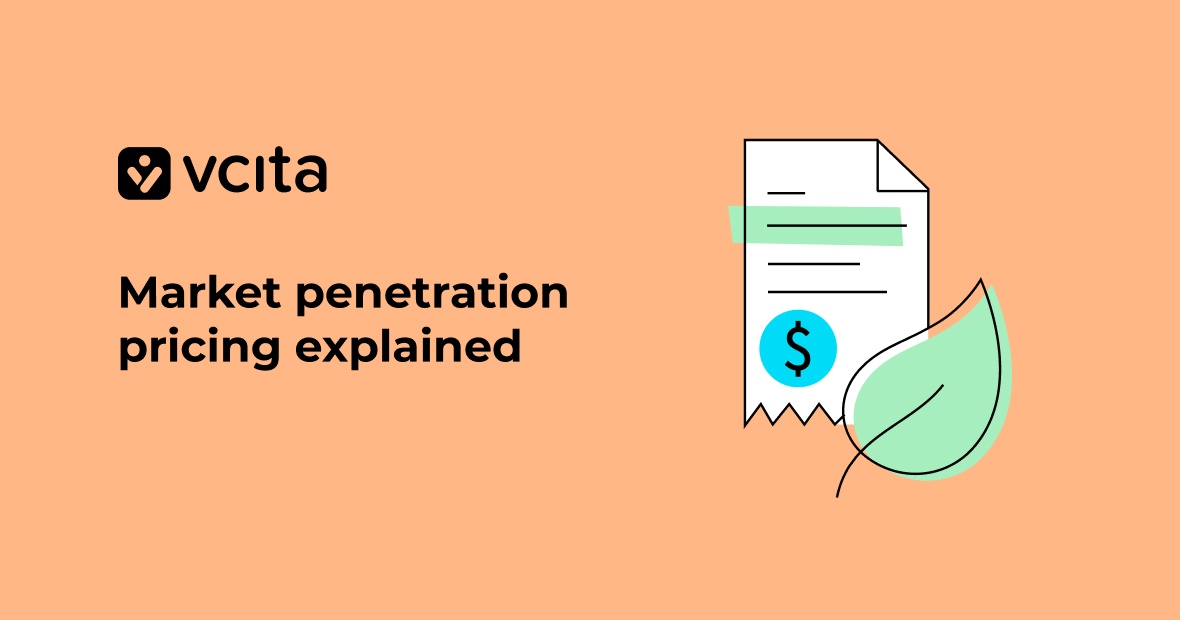Ever wondered how some companies seem to gain instant popularity and traction? Chances are, they employed a clever little marketing strategy called market penetration pricing. As a small business owner, this pricing technique could also help you to build a customer base and establish your brand in the market.
In brief, market penetration pricing involves setting an initial low price point for your product or service to attract customers and gain a foothold in the industry, and then raising prices as your brand recognition and perceived value increase. Read on to learn how market penetration pricing could bring benefits to your small business.
What is market penetration pricing?
Market penetration pricing is a marketing strategy where a company sets low prices for a new product or service when they first launch. This way, they can draw in new clients quickly and establish their brand in a short space of time. By setting prices low, you can win over customers from competitors and deter new competitors from entering the market.
For a small service business, market penetration pricing can be an effective way to stand out, attract customers, and establish your brand. Just be sure to have a plan in place to increase profitability over the long run through price increases, upselling, or improving operational efficiencies, because profit margins are often low with this pricing model.
With the right strategy and execution, market penetration pricing can lead to sustainable success.
The pros and cons of a market penetration pricing strategy
The success of a market penetration strategy depends on your target customers and how price sensitive they are. It also can only succeed if you’re able to gain market share fast while still making a profit, and build a loyal customer base. For small businesses, market penetration pricing has some appealing advantages to consider.
The pros of market penetration pricing
- Low prices attract customers and help you gain market share fast. This can help establish your brand image and gain momentum.
- It allows you to reach economies of scale quickly, which can lower costs in the long run.
- It can discourage competitors from entering the market or starting price wars. No one wants to enter a market where prices are already very low.
- Low prices can encourage a high word-of-mouth advertising and referrals, which quickly build brand awareness.
- Gaining a reputation for low prices and value for money can attract a loyal customer base who are then willing to pay more as your perceived value rises.
But while market penetration pricing can be an effective strategy to gain market share, there are some downsides to consider.
The drawbacks to market penetration pricing
- Low prices mean low profit margins in the short term. It may take time to raise prices without losing customers, which can harm your ability to remain profitable.
- It can be hard to change a brand image of being a “budget” option, and customers may resist your attempts to raise your prices.
- There’s a risk that customers will associate your business with low quality or cutting corners because of your low prices.
- Your low prices might attract deal-seeking customers who will switch to a competitor once you have to raise your prices.
- Competitors may already have a foothold and the resources to win a price war, so competing on price alone can be damaging.
Overall, market penetration pricing is best used as a temporary strategy to enter the market or launch a new product. When executed well, the long term benefits to market share and profits can be substantial. But companies must have a clear path to raising prices and transitioning to a sustainable pricing model over time.
Real world examples of market penetration pricing
Many of today’s most popular brands established their foothold in the market by using market penetration pricing.
Netflix
Netflix launched its brand by offering DVD rentals by mail at a low monthly price, to attract customers and build its subscriber base. Once it had established itself as a market leader, Netflix began raising prices and transitioning to online streaming.
Uber
Uber entered the market with eye-catching steep discounts and promotions, which worked to gain both riders and drivers. Uber was then able to raise prices once it dominated the market.
Budget airlines
Spirit and Frontier are budget airlines which charged very low initial fares, so as to fill planes and establish themselves. They then increased prices gradually over time, as their value became established in customers’ minds.
Tech companies
Many SaaS and tech companies use market penetration pricing for new products and services, to build hype and gain early adopters. They often offer a free or very low cost introductory plan that cements loyalty, and then encourage customers to switch to the higher-value premium packages.
How to implement a market penetration pricing model
For small businesses, a market penetration strategy works best when you have a clear competitive advantage, strong product differentiation, and the ability to scale. It is a useful pricing strategy, but should be balanced with other options like price skimming, differential pricing, price bundling, and psychological pricing. The most effective approach is often a combination of these strategies over the lifetime of your product or service.
Here are the steps you’ll need to follow for a successful market penetration pricing strategy.
-
Set an introductory price
As a new company entering the market, you want to price lower than established market leaders. This could mean reducing profit margins in the short term. The introductory price should still cover your costs, but aim for the lowest viable price point to gain customers. For example, a new fitness studio might offer a year’s membership for 40-50% off the regular price.
-
Focus on customer acquisition
Your primary goal is to acquire as many new customers as possible, so use an aggressive marketing strategy to promote your introductory offer. Offer free trials and discounts for referrals, and post details about your prices all over social media and your local community, to build brand awareness and make it easy for people to try your product or service.
-
Scale up and increase prices
Once you’ve built a strong customer base, you can raise prices to increase profit margins. Hopefully, your customers now understand your perceived value and are willing to pay more. As you achieve economies of scale, costs to provide your product or service decrease, allowing you to increase prices without sacrificing customer satisfaction.
1. Communicate your added value
It’s important to use marketing wisely as you raise your prices. Make sure to communicate the extra value that your business offers, to justify price increases. Keep improving your product or service, and consider bundling together offers or creating higher-priced, premium plans or packages.
2. Keep refining your pricing and costs
Market penetration pricing isn’t a one-off activity. You’ll need to keep working at optimizing costs to be sure that your prices are viable. It’s also important to continually improve your products and services, so that customers feel that your rising prices are valid.
When should I use market penetration pricing?
There are specific situations when market penetration pricing strategies are suitable. You can use this strategy when:
- You’re launching a new product or service
- You want to gain market share from competitors, especially market leaders
- You have a differential pricing or psychological pricing advantage
- You can offset lower initial profits with higher long term profits through price increases
On the other hand, market penetration pricing may not be ideal if you have a premium brand image, or limited ability to lower costs over time.
Market penetration pricing can be your secret weapon
With the right product and business model, market penetration pricing can be an effective strategy for gaining new customers and growing your company over the long run. The key is balancing low initial prices with the ability to increase profits through a rise in perceived value, market share, and operational efficiency over time. As your business and perceived value grows, you’ll have more flexibility to adjust your pricing using strategies like differential pricing, psychological pricing, and price bundling.




























